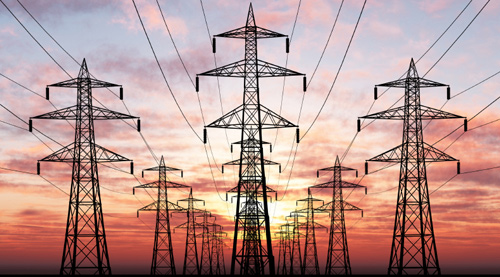Final energy consumption of Romanian industry declined by about 75% between 1990 and 2016, compared to only 25% at the EU level, according to data released by Eurostat.
From 25.3 Mtoe right after the regime change in 1989, we dropped to only 6.3 Mtoe, a quasi-stable value from 2013 onwards.
Methodological clarification
Mtoe is the abbreviation in English for millions of tons of oil equivalent. 1 Mtoe = 10,000 kcal/kg as defined by the International Energy Agency and is equivalent to 11.63 MWh (convertible to 4.4 MWh at an output rate of 38% recommended by British Petroleum) or 7.1-7.4 barrels of oil (depending on the type of oil)
*
- Final energy consumption in industry (1990-2016, Mtoe)
- Year
- EU
- Romania
*
Of course, an important part of this consumption decrease came from the efficiency increase in energy consumption through improved manufacturing processes. Unfortunately, in our case, the most important factor was the dramatic drop in production capacities. Especially in the petrochemical sector, the one that is currently producing almost the entire trade deficit.
For reference, we also present the decreases recorded by other former socialist states.
It is noteworthy that in ALL these countries, the energy consumption decrease in industry was lower than in Romania: Bulgaria (2.6/9.0 Mtoe, -72%), Hungary (4.3/6.5 Mtoe, – 33%), Poland (15.6/25.4, -39%), Slovakia (4.5/7.2 Mtoe, -37%) and the Czech Republic (7.4/17.3 Mtoe, -57%).
In this context, some important observations are required.
The share of our country’s consumption in the total recorded by all countries that form the actual EU has fallen to about a third, from 6.8% to just 2.3%, while our GDP is somewhat at a share decreased by half (1.2% of the EU GDP; imagine where we would have been without what’s left of the industry).
Significantly, from being on par with Poland in 1990, energy consumption in the industry has become two and a half times smaller. At the same time, Hungary, which has maintained the highest percentage (66%) of its energy consumption, now generates the biggest trade deficit for us among our European partners, and together with Poland reaches about 40% of our trade deficit.
As a result of this trend, imports of energy products dramatically decreased, with the external dependence on this chapter. Within ten years, the decrease was 39%, compared to 28% in Bulgaria and 17% in Hungary, not to mention the Czech Republic and Poland, which increased imports.
*
- Net total imports of energy products (thousands of tonnes oil equivalent)
- Country
- Romania
- Bulgaria
- Hungary
- Czech Republic
- Poland
*
With a level of only 0.4 tonnes per capita, Romania climbed to the second position, on the same level as Denmark and at a small distance from Estonia (0.3 tonnes/inhabitant) in the top of less dependent countries in terms of energy import at the European level. Much below Poland (0.8 tonnes/inhabitant), Bulgaria (0.9 tonnes/inhabitant), the Czech Republic (1.3 tonnes/inhabitant) and Hungary (1.5 tonnes/inhabitant).
Not to mention the big economic powers like Germany (2.5 tonnes/inhabitant), Italy (2 tonnes/inhabitant) or France (1.8 tonnes/inhabitant), by chance or not, precisely the main Romania’s foreign trade partner countries. Apparently, it would be praiseworthy, but we might get monumentally „fooled” when we draw the line.
Of course, we should be as less dependent as possible on the energy coming from outside. However, given the significant foreign trade deficit in goods, placed somewhere at 7% of GDP (!), it seems even less advantageous to depend on goods produced with energy imported by other countries, especially on petrochemicals, but not only.
Recently discovered energy resources can even qualify us as an energy exporter on the Norwegian model.
But beyond the fact that we are at a very low level in terms of development compared to the state from northern Europe, the question is whether it is justified to provide raw materials or increase their value with domestic production processes and balance foreign exchanges.












